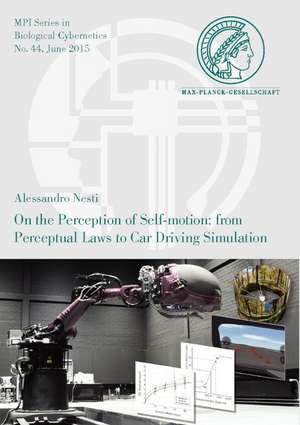On the Perception of Self-Motion: Mpi Series in Biological Cybernetics, cartea 44
en Limba Engleză Paperback
Preț: 456.67 lei
Nou
Puncte Express: 685
Preț estimativ în valută:
87.39€ • 89.50$ • 72.70£
87.39€ • 89.50$ • 72.70£
Indisponibil temporar
Doresc să fiu notificat când acest titlu va fi disponibil:
Se trimite...
Preluare comenzi: 021 569.72.76
Specificații
ISBN-13: 9783832540135
ISBN-10: 383254013X
Pagini: 211
Greutate: 0.23 kg
Editura: Logos Verlag Berlin
Seria Mpi Series in Biological Cybernetics
ISBN-10: 383254013X
Pagini: 211
Greutate: 0.23 kg
Editura: Logos Verlag Berlin
Seria Mpi Series in Biological Cybernetics















